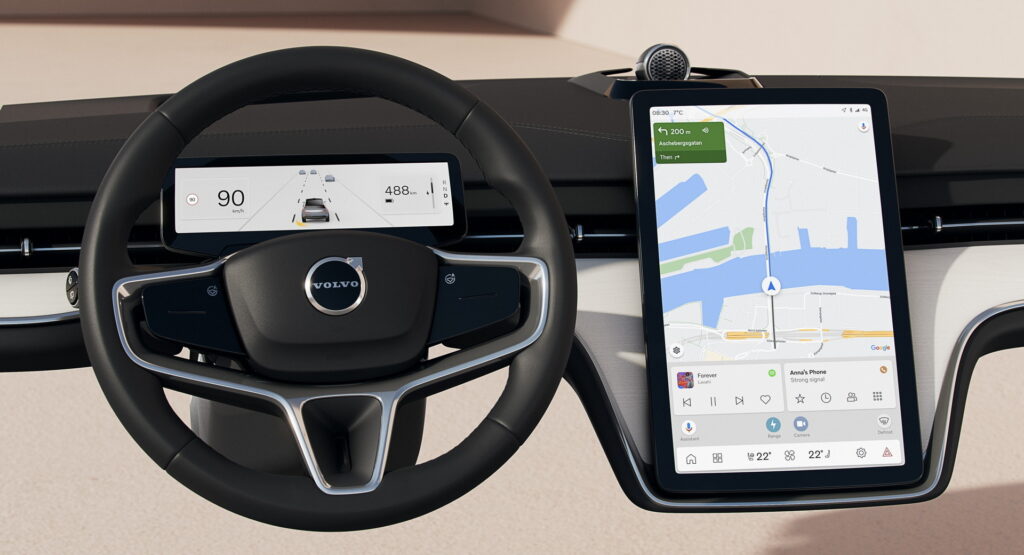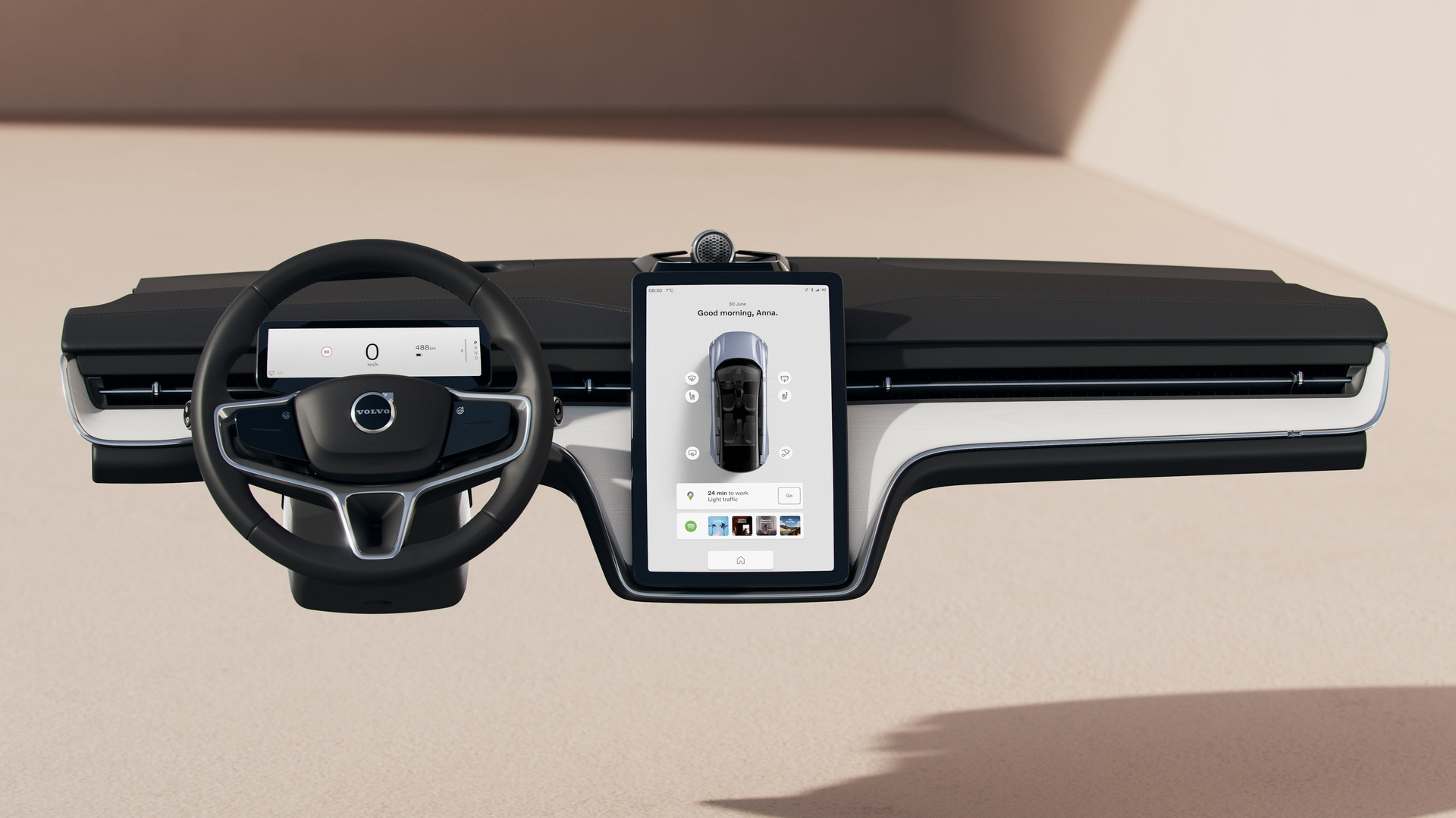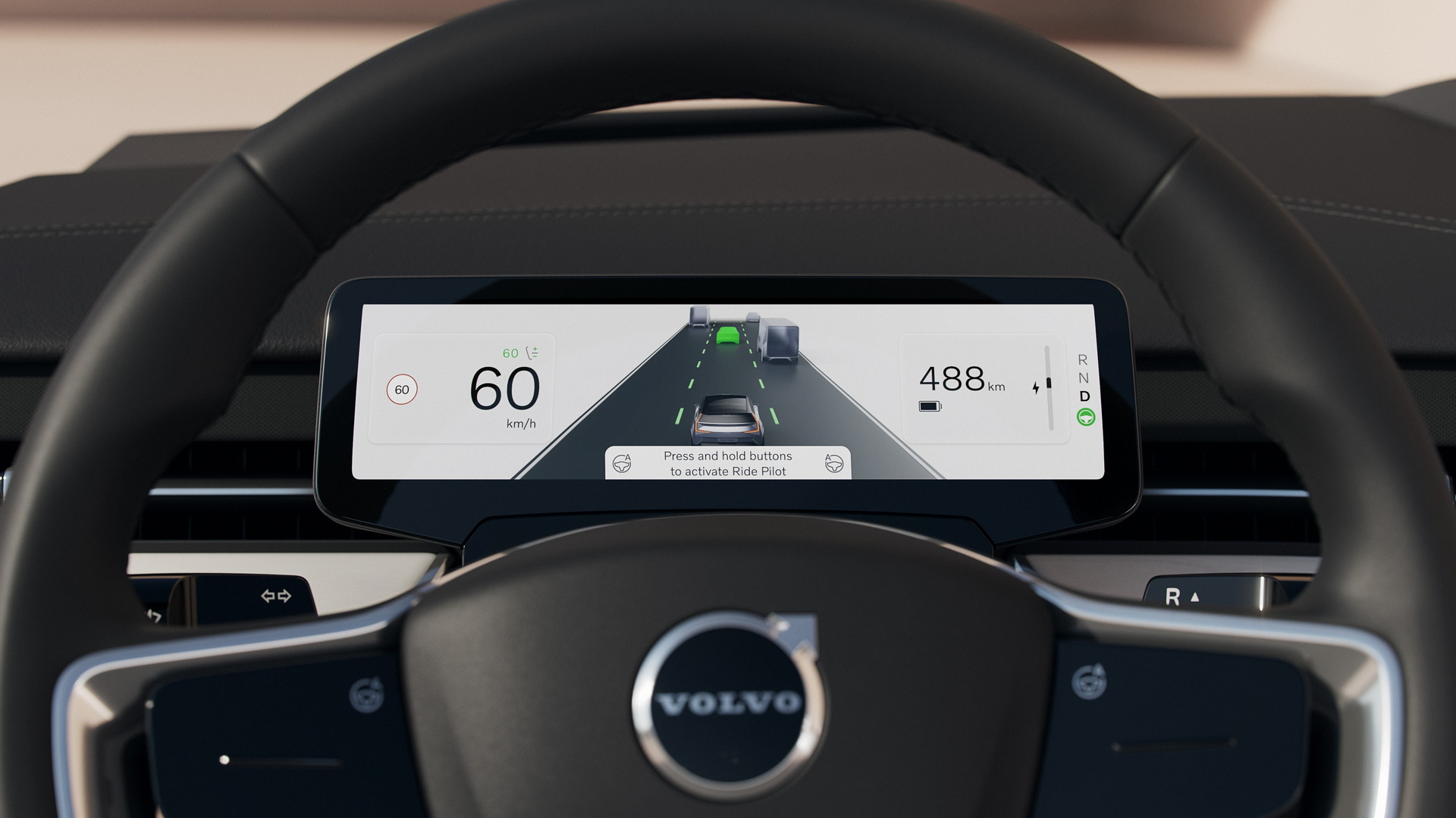Volvo believes that less is more when it comes to in-vehicle information, and it says it will put that into practice with the upcoming EX90. The new model will get simplified technology that aims to avoid information overload.
As with its previous cars, Volvo has put two screens in the EX90. The infotainment screen will be the larger one, and will be oriented in portrait mode. It will show navigation, media, and phone controls, as well as other information.
Volvo says that it will also show information based on context. If you’re simply driving along, a bar near the bottom of the screen will show media information; if you’re on a call, it will show other controls; if it’s cold, it may show the defrost button, etc.
Read: Volvo Teases EX90 Cabin, Says It’ll Be “One Of The Most Pleasant Car Interiors On The Market”
A smaller, landscape-oriented screen is behind the steering wheel, and it shows driving-related information, as you might expect. It can show speed, driving directions, range information, and more.
This, too, shows changes based on context. Senors around the car are used for advanced driver assistance features and automated driving modes. They can, however, provide the driver with information about the road around them, even if they are in full control of the car.
Volvo also wants to use the screen behind the wheel to convey to the driver how much assistance they can expect. Using colors and information, the car will let the driver know what the car sees, such as lanes and other vehicles.
According to the Swedish company, over time, it will update the driver assistance systems to include “unsupervised autonomous driving.” It will depend on the information being provided by the screens to let the driver know when it is and isn’t safe to depend on the car’s autonomous systems.
“It’s all about providing you with the right information at the right time,” says Thomas Stovicek, head of UX at Volvo Cars. “We want your driving experience to be focused, simple and safe. Since the car also understands its surroundings and you better than ever before, we can create an even safer situation by reducing mode confusion, distraction and information overload.”











